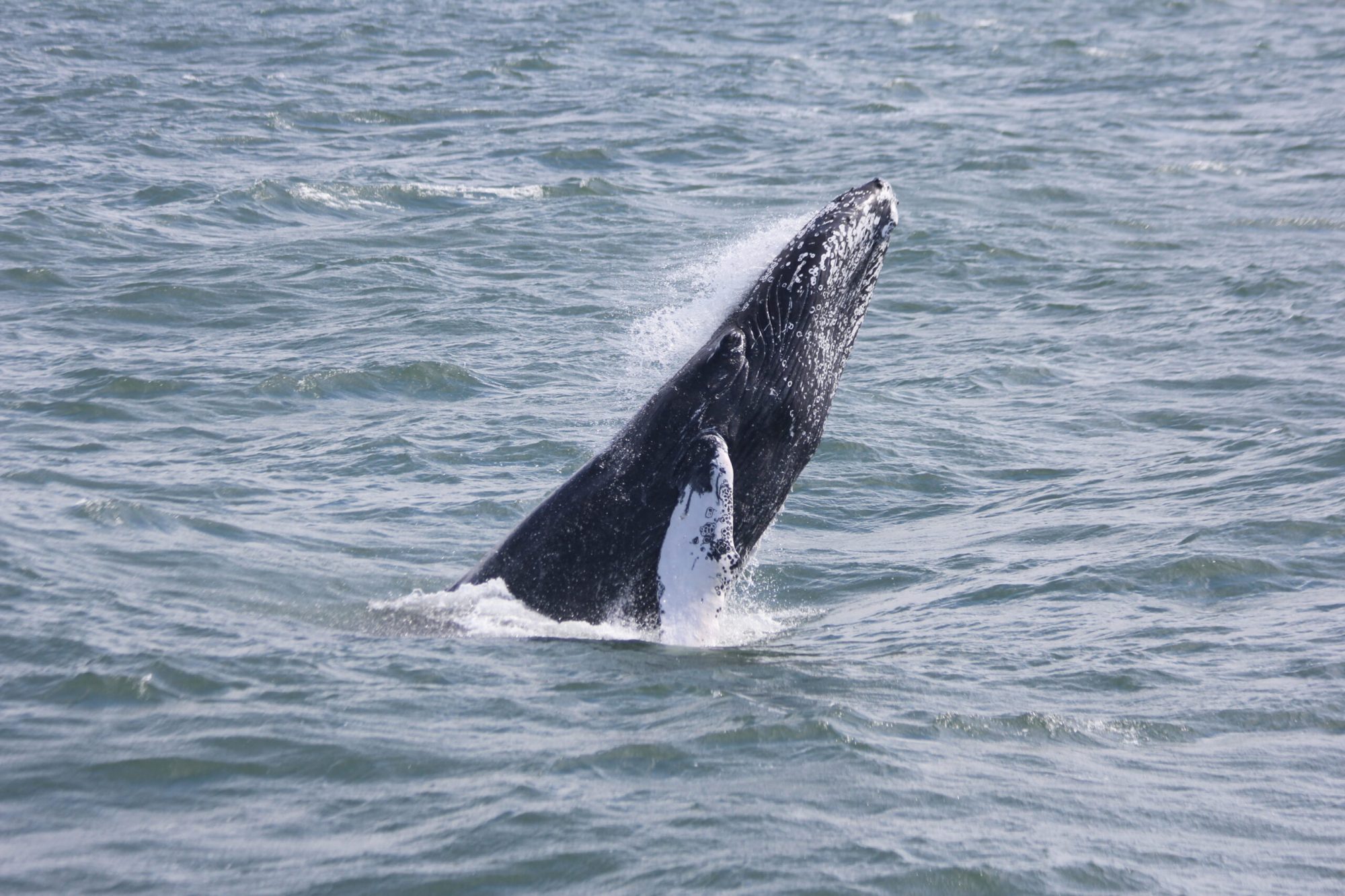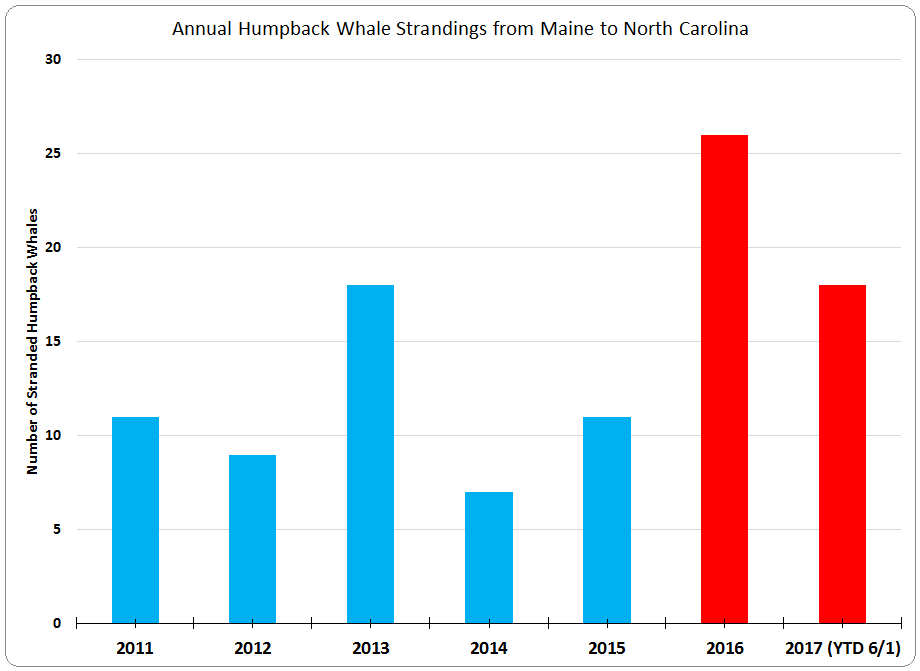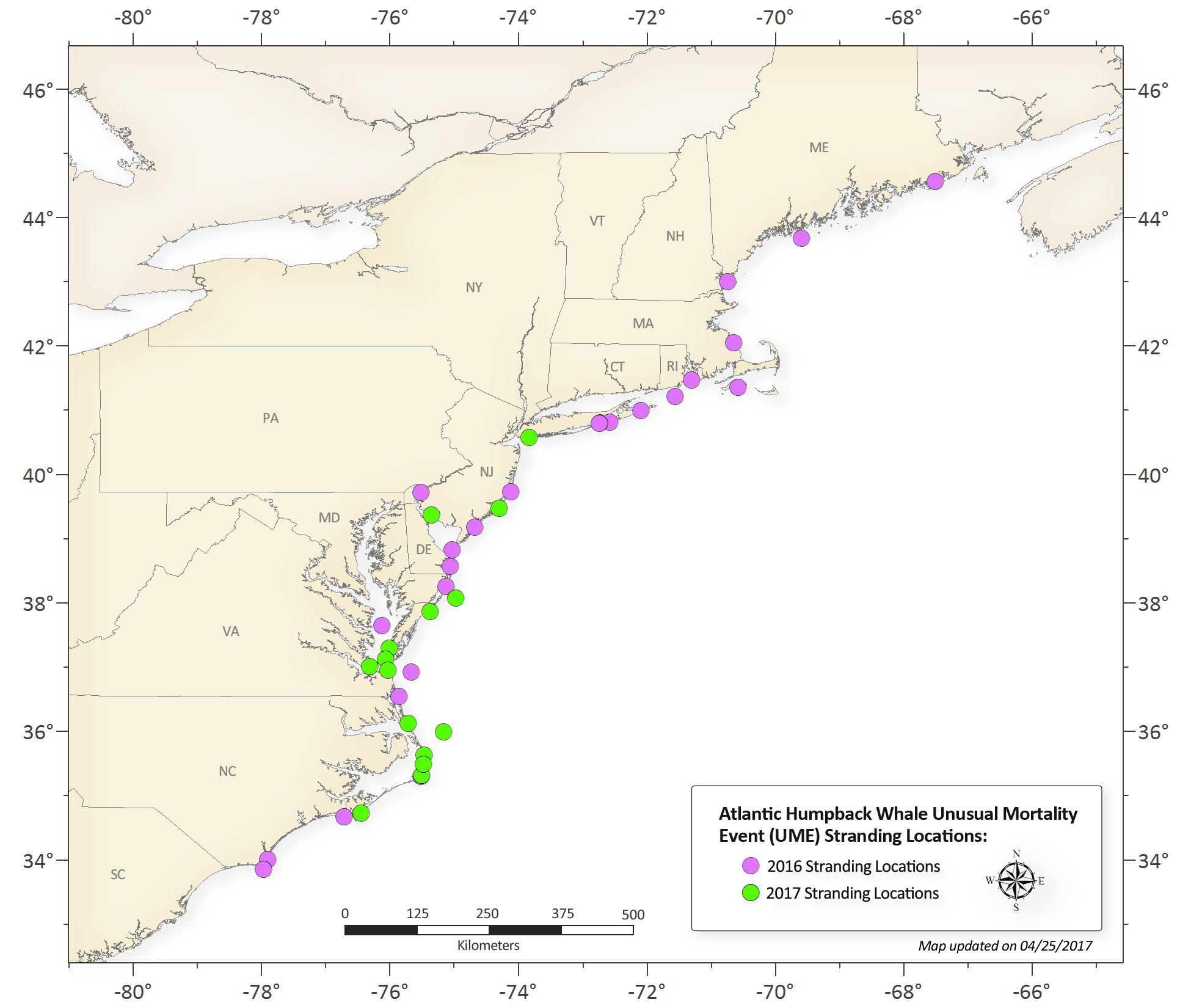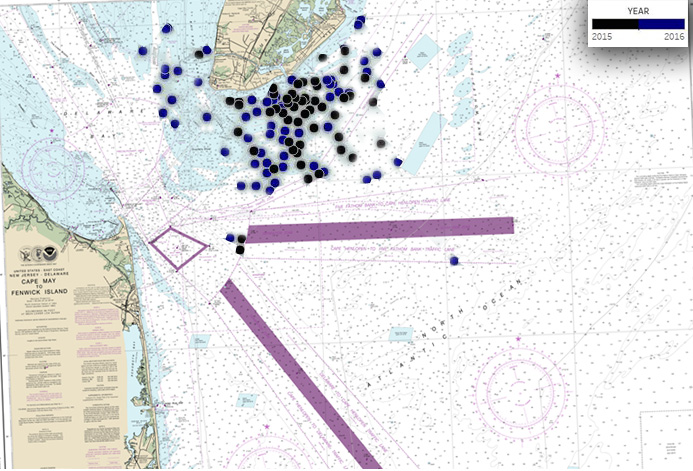Unusual Mortality Event Strikes East Coast

Unusual Mortality Event Strikes East Coast
As of 2016, the Humpback Whale (Megaptera novaeangliae) indigenous to our east coast has been taken off of the EPA’s endangered species list. The same year, January of 2016, marked the beginning of the Humpback whale Unusual Mortality Event (UME), from Maine to North Carolina, that would continue through 2017 as well. An ‘Unusual Mortality Event’ is described under the Marine Mammal Protection Act as “a stranding that is unexpected; involves a significant die-off of any marine mammal population; and demands immediate response”. Normally, the annual average number of deaths of these whales will come to about fourteen. In 2016 alone, there have been twenty-six documented deaths of humpback whales. So far in 2017, eighteen deaths have occurred, adding up to forty-four deaths since the UME has been declared. Private teams of researchers and scientists are now investigating these mysterious deaths in hopes of getting to the root of this problem.

Fig. 1) Annual Humpback Whale strandings from Marine to North Carolina from 2011-June 2017. The red bars of 2016 and 2017 indicate the current UME. Obtained from NOAA.gov.

(Fig. 2) Stranding locations of Humpback Whales in the Atlantic from Maine to North Carolina in 2016-April 2017. The locations do not depict the cause of stranding. Obtained from NOAA.gov.
Unfortunately, this is not the first time we have been witness to an UME. Since the Marine Mammal UME was created in 1991, sixty-three UME cases have been recorded, and at least 8 of them have occurred generally within the same Atlantic region that the current UME is happening. Most recently, in the years of 2013 to 2015, we have experienced a UME among our Atlantic Bottlenose Dolphin (Tursiops truncatus) population (“2013-2015 Bottlenose Dolphin Unusual Mortality Event”, 2013). The cause of the UME was found to be cetacean morbillivirus; a virus specific to cetaceans (whales, dolphins, and porpoise) that affects them similarly to how us humans are affected by measles (the bottlenose dolphin population was also affected by this disease in 1988 (NOAA Fisheries, 2015). Necropsies revealed signs of this disease through skin lesions and various infections. A lot of UME’s that have occurred in the past have had causes made evident through necropsy such as disease, but the derivative of a UME is much more often left undiscovered.
Currently, as of April 24th 2017, twenty of the forty-two whales that have died have been examined. As for ten of those examined whales, the cause of death has been determined; necropsies have shown obvious signs of pre-mortem vessel strikes and propellor wounds. These vessel strikes are not uncommon, but the rate at which they have been happening recently is quite alarming. Vessel strikes can happen for a variety of reasons; the noises and vibrations ships give off from their engines is sometimes mistaken for another whale, and therefore a whale may approach it closely, or the noise pollution may disorient it (NOAA, 2015). Baleen whales do not have the ability to echolocate like Odontocete whales do, and therefore it is difficult for them to know where they are in relation to a vessel. The Cape May Whale Watch and Research Center participates with a program known as Whale SENSE, where all of our captains, naturalists and interns are trained in the respectful and responsible viewing techniques for our marine mammals. We understand that we are viewing these animals in their natural habitat and strive to give them the utmost courtesy and respect. The Cape May Whale Watch and Research Center’s 2015-2016 baleen whale sightings are displayed in Fig. 3 with the major shipping lanes off the coast of New Jersey and Delaware. Our sightings begin to stray within the lines of what is commonly referred to as ‘Tugboat Alley’; a shipping lane that is typically populated with tugboats hauling oil dredges and other barges. Offshore pelagic trips display whale sightings occurring within the traffic separation scheme. The migration routes of these animals intersect with these major shipping lanes, increasing the possibility vessel strikes.

Fig. 3) 2015 and 2016 Baleen whale sightings (M.n., B.a., B.p.) by Cape May Whale Watch and Research Center with overlay NOAA Nautical Chart 12214 (Updated 04/2017) created with Tableau by Melissa Laurino.
The most compelling theory that researchers are exploring is that these vessel strikes could be linked to ecological factors and changes (EcoWatch, 2017). Our oceans are currently rising and warming (whether our current government agrees or not!) which is inevitably causing a shift in the ecosystem as organisms try to adapt. Large baleen whales have a great deal of blubber that insulates them and allows them to spend their lives in cooler waters. As our oceans gradually warm, they will gradually adapt and shift their migration routes further north. More importantly, the ecological changes are affecting baleen whale’s prey and their location as well. NOAA Fisheries spokesperson, Jennifer Goebel, stated, “There may be changes in prey distribution that may be affecting where the whales are, and that may be contributing to a change in the whales’ distribution” (Fox News, 2017). Greg Silber, whale recovery coordinator at NOAA Fisheries adds, “It’s probably linked to resources. Humpback whales follow where the prey is.” (EcoWatch, 2017). Climate change not only affects these whales but all aquatic organisms. For example, Dr. Kawaguchi, a biologist in Australia who has been studying krill for twenty-five years, has come to the alarming discovery in 2015 that when exposed to carbon dioxide, krill eggs do not hatch. This will significantly reduce the krill population, the paramount organism that whales feed on. The abundance of krill will then vary depending on the area and water temperature and the whales will follow to where the krill is plentiful, which may lead them into and expose them to shipping traffic. These factors (climate change, prey distribution, alteration of migratory patterns) are all viewed as likely possibilities when it comes to the reason behind a spike in vessel strikes. Again, the team of scientists analyzing the UME is considering these factors throughout the investigation.
While those ten necropsied whales had an evident cause of death, the cause of death of the other whales has yet to be determined. So far, none have shown obvious reason regarding their demise, and they have yet to necropsy the twenty-two others. There has been speculation among scientists, as Goebel and Silber demonstrated,about what may have brought on this unfortunate series of events other than vessel strikes, such as lack of resources, bacterial or viral infections, other effects of climate change, and direct or indirect effects from humans. Direct or indirect effects from humans may consist of entanglement in marine debris, microplastics affecting the food chain, and harassment.
NOAA Fisheries is now determining the next steps for the investigation, and states that it will most likely take months or years of data collection and analysis. NOAA encourages to report a stranded or floating whale by calling the Greater Atlantic Marine Mammal Stranding Hotline (866-755-6622), the Southeast Marine Mammal Stranding Hotline (877-433-8299), or contact the U.S. Coast Guard on VHF Channel 16. It is also encouraged to donate to the Marine Mammal Unusual Mortality Event Contingency Fund in order to help fund their research so they may determine the cause of the UME, and help save our beloved Humpback whale population.
–Alayna Robertson,
Intern at Cape May Whale Watch and Research Center
Harriton High School / College of Charleston
Coauthor: Melissa Laurino
